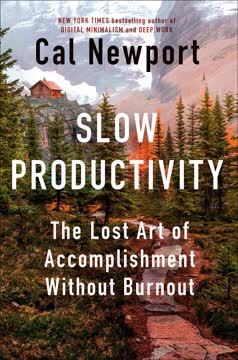ข้อสำคัญ
1. ทำความเข้าใจบทสนทนาทั้งสามประเภท
บทสนทนาที่มีประโยชน์แบ่งออกเป็น 3 ประเภท ได้แก่ บทสนทนาเชิงปฏิบัติที่เน้นคำถามว่า “เรื่องนี้แท้จริงคืออะไร?” บทสนทนาเชิงอารมณ์ที่ถามว่า “เรารู้สึกอย่างไร?” และบทสนทนาเชิงสังคมที่สำรวจว่า “เราเป็นใคร?”
ประเภทของบทสนทนา บทสนทนาที่มีความหมายทุกบทมักจะอยู่ในหนึ่งในสามประเภทนี้ และมักเปลี่ยนแปลงไปตามการสนทนา บทสนทนา “เรื่องนี้แท้จริงคืออะไร?” จะเน้นเรื่องการตัดสินใจและการแก้ปัญหา เช่น การวางแผน การประเมินทางเลือก และการกำหนดเป้าหมาย บทสนทนา “เรารู้สึกอย่างไร?” จะเน้นความรู้สึก ความเชื่อ และค่านิยม เปิดโอกาสให้แสดงความเปราะบางและสร้างความสัมพันธ์ที่ลึกซึ้งขึ้น ส่วนบทสนทนา “เราเป็นใคร?” จะสำรวจตัวตนทางสังคม ความสัมพันธ์ และบทบาทของเราในกลุ่มต่าง ๆ
การรู้จักประเภทบทสนทนา การเข้าใจว่ากำลังอยู่ในบทสนทนาแบบใดเป็นสิ่งสำคัญต่อการสื่อสารอย่างมีประสิทธิภาพ เพราะจะช่วยให้เราปรับวิธีการสื่อสารให้สอดคล้องกับคู่สนทนา และตอบโจทย์ประเด็นที่ถูกต้อง เช่น การเสนอทางแก้ปัญหาในบทสนทนาเชิงอารมณ์อาจถูกมองว่าไม่ใส่ใจ ขณะที่การแสดงอารมณ์มากเกินไปในบทสนทนาเชิงตัดสินใจอาจทำให้ดูไม่ชัดเจน
2. หลักการจับคู่: การปรับสไตล์การสื่อสารให้สอดคล้องกัน
การสื่อสารที่มีประสิทธิภาพต้องรู้ว่ากำลังคุยเรื่องอะไร และปรับตัวให้เข้ากับคู่สนทนา
การสะท้อนและปรับตัว หลักการจับคู่แนะนำให้เราปรับสไตล์การสื่อสารให้สอดคล้องกับคู่สนทนา ไม่ใช่แค่เลียนแบบคำพูดหรือโทนเสียง แต่หมายถึงการปรับให้เข้ากับอารมณ์ ระดับพลังงาน และเป้าหมายของการสนทนา เมื่อเราจับคู่สไตล์ได้ดี จะเกิดความรู้สึกเชื่อมโยงและเข้าใจกัน ทำให้บทสนทนาเป็นไปอย่างราบรื่นและน่าพึงพอใจทั้งสองฝ่าย
การนำไปใช้จริง เพื่อใช้หลักการจับคู่:
- สังเกตโทนเสียง จังหวะ และระดับพลังงานของคู่สนทนา
- ใส่ใจภาษาที่ใช้ (เชิงอารมณ์ เชิงวิเคราะห์ ฯลฯ)
- ปรับสไตล์การสื่อสารของตนเองให้เหมาะสม
- พร้อมเปลี่ยนวิธีการเมื่อบทสนทนาเปลี่ยนแปลง
หลักการนี้มีประโยชน์อย่างยิ่งในสถานการณ์ทางธุรกิจ การเจรจา และการแก้ไขข้อขัดแย้ง ที่การสร้างความสัมพันธ์และความเข้าใจร่วมกันเป็นสิ่งจำเป็น
3. พลังของการตั้งคำถามลึกซึ้ง
หากต้องการเชื่อมต่อกับใครสักคน ให้ถามถึงความรู้สึกของเขา แล้วเปิดเผยความรู้สึกของตัวเองด้วย
ส่งเสริมความเปราะบาง คำถามลึกซึ้งช่วยให้บทสนทนาเกินกว่าการพูดคุยผิวเผิน และเปิดโอกาสให้คนแชร์ความเชื่อ ค่านิยม และประสบการณ์ คำถามเหล่านี้สร้างพื้นที่สำหรับความเปราะบาง ซึ่งเป็นกุญแจสำคัญในการสร้างความสัมพันธ์ที่แท้จริง การถามถึงความรู้สึก ความฝัน หรือความท้าทายของใครสักคน แสดงให้เห็นว่าเราสนใจที่จะเข้าใจเขาในระดับลึก
ตัวอย่างและประโยชน์ คำถามลึกซึ้งที่ดี เช่น
- “ส่วนที่ท้าทายที่สุดในเส้นทางของคุณคืออะไร?”
- “ประสบการณ์นั้นมีผลต่อมุมมองชีวิตของคุณอย่างไร?”
- “คุณให้ความสำคัญกับอะไรที่สุดในความสัมพันธ์?”
ประโยชน์ของการตั้งคำถามลึกซึ้ง
- สร้างความไว้วางใจและความใกล้ชิด
- กระตุ้นให้เกิดการสะท้อนตนเอง
- นำไปสู่บทสนทนาที่มีความหมายและน่าจดจำ
- ช่วยลดอคติและความเข้าใจผิด
อย่าลืมตอบแทนด้วยการแบ่งปันความคิดและความรู้สึกของตัวเอง เพื่อสร้างการแลกเปลี่ยนที่สมดุล
4. ฟังให้เกินกว่าคำพูด: การสังเกตสัญญาณที่ไม่ใช่คำพูด
เพื่อฟังสิ่งที่คนพูด เราต้องใส่ใจสัญญาณอารมณ์ที่ไม่ใช่คำพูด เช่น เสียงที่เขาทำ ท่าทาง โทนเสียง จังหวะการพูด ท่าทางร่างกาย และสีหน้าของเขา
การสื่อสารที่ไม่ใช่คำพูด ส่วนใหญ่ของการสื่อสารเกิดขึ้นผ่านสัญญาณที่ไม่ใช่คำพูด เช่น สีหน้า ท่าทาง โทนเสียง และแม้แต่ความเงียบ การใส่ใจสัญญาณเหล่านี้ช่วยให้เราเข้าใจสิ่งที่คนพูดอย่างลึกซึ้ง แม้คำพูดอาจไม่สอดคล้องกัน
องค์ประกอบสำคัญที่ควรสังเกต:
- สีหน้า (รอยยิ้ม หน้าบึ้ง คิ้วขมวด)
- ท่าทางร่างกาย (เปิดเผยหรือปิดกั้น โน้มตัวเข้าหรือถอยออก)
- การเคลื่อนไหวมือ การพยักหน้า หรือการยักไหล่
- โทนเสียง (ระดับเสียง ความดัง จังหวะ)
- การสบตา (หรือการหลบตา)
- ระยะห่างทางกายภาพ
การฝึกฝนการอ่านสัญญาณเหล่านี้ช่วยให้เราเป็นผู้ฟังที่เข้าอกเข้าใจและสื่อสารได้ดีขึ้น โดยเฉพาะอย่างยิ่งในการสื่อสารข้ามวัฒนธรรมที่ภาษาอาจเป็นอุปสรรค
5. การจัดการความขัดแย้งด้วยความฉลาดทางอารมณ์
การสื่อสารกับใครสักคนต้องเชื่อมโยงกัน เมื่อเรารับรู้สิ่งที่เขาพูด และเขาเข้าใจสิ่งที่เราพูด นั่นเพราะสมองของเราปรับจูนกันในระดับหนึ่ง
การซิงโครไนซ์ทางอารมณ์ ในช่วงความขัดแย้ง มักง่ายที่จะมุ่งเน้นแค่การชนะหรือพิสูจน์ความถูกต้อง แต่การแก้ไขปัญหาที่แท้จริงมักเกิดจากการปรับจูนอารมณ์ร่วมกัน ซึ่งหมายถึงการรับรู้และยอมรับอารมณ์ที่อยู่เบื้องหลังความขัดแย้ง ทั้งในตัวเองและผู้อื่น การทำเช่นนี้จะสร้างพื้นฐานของความเข้าใจร่วมและการแก้ปัญหาแบบร่วมมือ
กลยุทธ์เพื่อการปรับจูนอารมณ์:
- ฝึกฟังอย่างตั้งใจ โดยเน้นอารมณ์ที่ซ่อนอยู่ในคำพูด
- ใช้ประโยคที่เริ่มด้วย “ฉันรู้สึกว่า...” เพื่อแสดงความรู้สึกโดยไม่กล่าวโทษ
- ยอมรับมุมมองของอีกฝ่าย แม้จะไม่เห็นด้วย
- มองหาจุดร่วมและเป้าหมายที่เหมือนกัน
- หยุดพักเมื่ออารมณ์รุนแรงเพื่อป้องกันการบานปลาย
- ใช้เทคนิค “วนกลับเพื่อความเข้าใจ” เพื่อให้การสื่อสารชัดเจน
ด้วยความฉลาดทางอารมณ์ เราสามารถเปลี่ยนความขัดแย้งจากการปะทะเป็นโอกาสในการเติบโตและสร้างความสัมพันธ์ที่แข็งแรงขึ้น
6. อิทธิพลของอัตลักษณ์ทางสังคมต่อการสื่อสาร
อัตลักษณ์ทางสังคมของเรามีอิทธิพลอย่างมากต่อสิ่งที่เราพูด วิธีที่เราฟัง และสิ่งที่เราคิด แม้ในบางครั้งเราไม่ต้องการให้เป็นเช่นนั้น
อิทธิพลของอัตลักษณ์ อัตลักษณ์ทางสังคมของเรา เช่น เชื้อชาติ เพศ อายุ อาชีพ และพื้นฐานวัฒนธรรม มีผลต่อสไตล์การสื่อสารและการรับรู้ของเรา อัตลักษณ์เหล่านี้สามารถสร้างทั้งความเชื่อมโยงและอุปสรรคในการสนทนา ส่งผลต่อการตีความข้อความและการที่ผู้อื่นมองเรา
ข้อควรพิจารณาสำคัญ:
- ตระหนักถึงอัตลักษณ์ของตนเองและผลกระทบต่อการสื่อสาร
- เข้าใจว่าคนอื่นอาจมีประสบการณ์และมุมมองที่แตกต่างกันตามอัตลักษณ์ของเขา
- หลีกเลี่ยงการตั้งสมมติฐานจากอคติหรือการเหมารวม
- ฝึกความถ่อมตนทางวัฒนธรรมและเปิดใจเรียนรู้มุมมองที่หลากหลาย
- ใช้ภาษาที่ครอบคลุมและเคารพอัตลักษณ์ที่หลากหลาย
- เมื่อพูดคุยเรื่องละเอียดอ่อน ให้ยอมรับบทบาทของอัตลักษณ์ทางสังคมในการกำหนดความคิดเห็นและประสบการณ์
ด้วยความเข้าใจอิทธิพลของอัตลักษณ์ทางสังคม เราจะสื่อสารได้อย่างมีประสิทธิภาพมากขึ้นในกลุ่มที่หลากหลาย และสร้างสภาพแวดล้อมที่เปิดกว้างและครอบคลุม
7. สร้างพื้นที่ปลอดภัยสำหรับบทสนทนาที่ยากลำบาก
บทสนทนา “เราเป็นใคร?” อาจยาก แต่ก็สำคัญอย่างยิ่ง
ส่งเสริมความเปิดใจ บทสนทนาที่ยาก โดยเฉพาะเรื่องอัตลักษณ์ สิทธิพิเศษ หรือประเด็นถกเถียง ต้องการสภาพแวดล้อมที่ปลอดภัยและสนับสนุน การสร้างพื้นที่นี้ต้องกำหนดกติกาชัดเจน ส่งเสริมความเคารพซึ่งกันและกัน และกระตุ้นให้เปิดใจ เมื่อคนรู้สึกปลอดภัยที่จะพูดโดยไม่กลัวการตัดสินหรือการตอบโต้ บทสนทนาที่จริงใจและสร้างสรรค์จะเกิดขึ้นได้
องค์ประกอบสำคัญของพื้นที่ปลอดภัย:
- กำหนดกติกาการสื่อสารที่เคารพกัน
- ส่งเสริมการฟังอย่างตั้งใจและเห็นอกเห็นใจ
- ยอมรับว่าความไม่สบายใจเป็นส่วนหนึ่งของการเติบโต
- อนุญาตให้มีความเป็นนิรนามหรือความลับเมื่อเหมาะสม
- เปิดโอกาสให้ทุกเสียงได้รับการรับฟัง
- จัดหาทรัพยากรสำหรับการเรียนรู้และสนับสนุนเพิ่มเติม
การสร้างพื้นที่ปลอดภัยสำหรับบทสนทนาที่ยากลำบากช่วยให้เราสามารถจัดการกับประเด็นสำคัญ สร้างความเข้าใจข้ามความแตกต่าง และส่งเสริมการเติบโตทั้งส่วนบุคคลและส่วนรวม วิธีนี้มีความสำคัญอย่างยิ่งในที่ทำงาน สถานศึกษา และองค์กรชุมชนที่ต้องการความร่วมมือจากมุมมองที่หลากหลาย
อัปเดตล่าสุด:
FAQ
What's Supercommunicators about?
- Focus on Communication Skills: Supercommunicators by Charles Duhigg explores the art of effective communication, emphasizing deeper connections through understanding social identities and emotional cues.
- Three Types of Conversations: Duhigg identifies three primary conversation types: practical, emotional, and social identity discussions, which help navigate interactions more effectively.
- Strategies for Connection: The book provides practical strategies, such as asking open-ended questions and practicing active listening, to foster deeper connections.
Why should I read Supercommunicators?
- Enhance Relationships: The book offers insights to improve interpersonal skills, leading to stronger personal and professional relationships.
- Navigate Difficult Conversations: It provides strategies for handling tough discussions, relevant in today's polarized environment.
- Learn from Experts: Insights from psychologists and communication experts enrich the reader's understanding of effective communication.
What are the key takeaways of Supercommunicators?
- Understanding Conversation Types: Recognizing practical, emotional, and social conversations helps align communication styles for effective dialogue.
- Importance of Social Identities: Social identities shape communication; understanding them aids in navigating conversations.
- Active Listening and Questions: Asking open-ended questions and practicing active listening lead to deeper understanding and connection.
What are the best quotes from Supercommunicators and what do they mean?
- “Every meaningful conversation is made up of countless small choices.”: Highlights the importance of engagement choices in effective communication.
- “The single biggest problem with communication is the illusion it has taken place.”: Emphasizes the need for active listening and ensuring understanding.
- “It is not our differences that divide us, it is our ability to recognize, accept and celebrate those differences.”: Encourages embracing diversity for stronger connections.
What is the Matching Principle in Supercommunicators?
- Definition of Matching Principle: It involves recognizing the conversation type and adjusting communication style accordingly for effective dialogue.
- Importance of Alignment: Miscommunication often occurs when conversation types are mismatched; alignment fosters productive dialogue.
- Practical Application: Duhigg provides examples of applying the principle in work and personal contexts for meaningful conversations.
How can I improve my emotional conversations as suggested in Supercommunicators?
- Ask Deep Questions: Delve into beliefs and values to invite vulnerability and foster emotional connection.
- Practice Active Listening: Pay attention to nonverbal cues and emotional expressions to show engagement.
- Use Looping for Understanding: Summarize and confirm what the other person has said to demonstrate listening and clarify misunderstandings.
What is the Fast Friends Procedure mentioned in Supercommunicators?
- Overview of Fast Friends Procedure: A series of thirty-six questions designed to foster intimacy and connection between strangers.
- Mechanism of Connection: Encourages sharing vulnerabilities and reciprocal self-disclosure, creating emotional contagion.
- Application in Real Life: Principles can be applied by asking deep questions and encouraging open dialogue in various contexts.
How does Supercommunicators suggest handling conflicts in conversations?
- Acknowledge Emotions: Recognizing and discussing emotions can de-escalate tensions and foster understanding.
- Use Looping for Understanding: Summarizing thoughts and feelings helps clarify and demonstrate listening.
- Focus on Common Goals: Identifying shared interests shifts conversations from adversarial to collaborative problem-solving.
What role does vulnerability play in Supercommunicators?
- Foundation of Connection: Vulnerability is key to meaningful conversations, encouraging reciprocity and deeper connections.
- Emotional Contagion: Sharing vulnerabilities can trigger emotional contagion, enhancing bonds between partners.
- Creating Safe Spaces: Active listening and empathy create environments where individuals feel safe to express feelings.
How does Supercommunicators address online communication?
- Criticism in Public Forums: Negative feedback online often backfires; Duhigg advises against public criticism to maintain positivity.
- Importance of Tone and Context: Mindfulness of tone and context leads to better communication outcomes.
- Strategies for Improvement: Practical tips include using gratitude and hedging comments for constructive digital dialogue.
What is the significance of the Motivational Interviewing method in Supercommunicators?
- Guiding Conversations: Encourages self-reflection and personal insight by exploring beliefs and motivations.
- Building Rapport: Establishing a connection leads to more productive and meaningful conversations.
- Facilitating Change: Effective in encouraging behavior change by understanding perspectives and guiding informed decisions.
How can I apply the concepts from Supercommunicators in my daily life?
- Practice Active Listening: Listen attentively, paying attention to verbal and nonverbal cues to understand emotions.
- Ask Meaningful Questions: Incorporate deep questions to encourage vulnerability and emotional connection.
- Be Mindful of Conversation Types: Recognize conversation types and adjust approach to prevent misunderstandings and foster better communication.
รีวิว
หนังสือเล่มนี้ชื่อว่า Supercommunicators ได้รับคำวิจารณ์ที่หลากหลาย โดยมีเสียงชื่นชมในเรื่องความเข้าใจลึกซึ้งเกี่ยวกับการสื่อสารที่มีประสิทธิภาพ ขณะเดียวกันก็มีเสียงวิจารณ์เกี่ยวกับแนวทางทางการเมืองที่แฝงอยู่ในเนื้อหา ผู้อ่านส่วนใหญ่ชื่นชอบคำแนะนำที่นำไปใช้ได้จริงและตัวอย่างจากสถานการณ์จริง แต่บางส่วนรู้สึกว่าเนื้อหาบางตอนซ้ำซากหรือขาดความแปลกใหม่ หลายคนยกย่องสไตล์การเขียนของ Duhigg และเห็นว่าหนังสือเล่มนี้มีศักยภาพในการช่วยพัฒนาความสัมพันธ์ระหว่างบุคคล ขณะที่นักวิจารณ์บางท่านมองว่าหนังสืออาจทำให้เรื่องที่ซับซ้อนดูง่ายเกินไปและไม่สามารถใช้ได้กับทุกสถานการณ์ แม้จะมีความเห็นที่แตกต่างกัน แต่ผู้รีวิวส่วนใหญ่ก็ยอมรับว่าหัวข้อที่นำเสนอมีความสำคัญ และเห็นคุณค่าในแนวทางการสำรวจเทคนิคการสื่อสารของหนังสือเล่มนี้อย่างชัดเจน
Similar Books

















